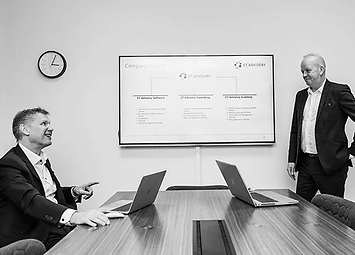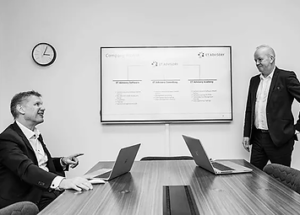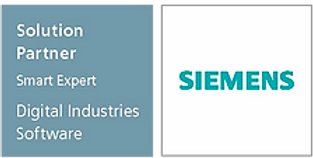A PLM-related stand-alone solution which can save from tens of thousands of dollars to over $10 million—is this really possible?
”Absolutely,” says seasoned PLM expert Tony Bergström, CEO of ET Advisory, who has a long history of experience in this area. He has teamed up with Mats Bergkvist, a cost management specialist with many years of domain experience, and founded ET Advisory. The mission is to market and sell a software from Siemens: the stand-alone solution, Teamcenter Product Cost Management (TcPCM). An advantage is that TcPCM works in virtually any of the big industrial PLM environments where other solutions—such as those from Dassault Systèmes or PTC—are already installed.
“This software is a way to ensure that you get the right price for what you buy in terms of parts and components, in everything from electronics and plastics to metal parts and systems. The software is a modular end-to-end solution, which handles product costs throughout the process, from purchased materials, through internal manufacturing processes, to profitability analyses,” Bergström states.
But it doesn’t stop there. Bringing in TcPCM is also about gaining control and transparency over processes and costs that relate to what you order and buy from your subcontractors. “Or you as a subcontractor can get deep insights on what a component or system should cost, and be able to meet the short quotation times required today,” Bergström added.
He argues that this strengthens not only the competitiveness of the buyer, but also the supplier’s ability to sharpen their processes and lower their price picture. “These are all characteristics that will mean more than ever when industry production gains speed again after the COVID-19 virus has been defeated.”
Meet Tony Bergström in today’s in-depth interview, which can help save big money for your business.
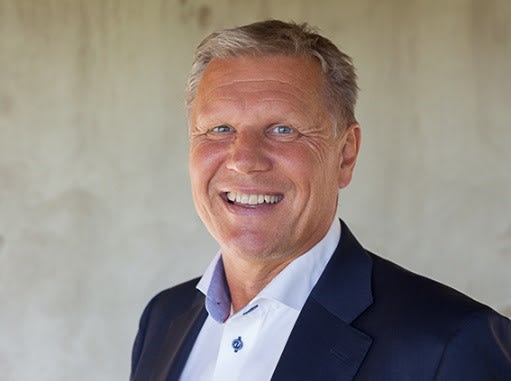
FULL ACTION IN A HOT PLM SEGMENT. PLM expert Tony Bergström (pictured), with a long history of experience in the area, has joined forces with Mats Bergkvist, a specialist with many years of experience in the “Cost Management domain.” They founded the company ET Advisory. Their mission is to market and sell a software from Siemens: the ”stand-alone solution” Teamcenter Product Cost Management (TcPCM). For those who have not paid attention to this area’s expansive growth in recent years, there is much to be gained when it comes to savings. ”From $10,000 to more than $10 million,” says Bergström.
What makes this system more interesting than ever in these challenging times is that it primarily aims at the automotive, electronics, consumer goods and machine industry segments. When these industries’ wheels start rolling again, they may initially be more economically vulnerable than ever before. In this situation, the TcPCM solution can turn out to be one of the important instruments in sharpening the financial circumstances in the hunt for profitability.
Contains More than 800 Predefined Processes
Tony Bergström and Mats Bergkvist have no doubts about this. They have already seen what this tool can produce in real life situations. For example, Teamcenter Cost Management contains more than 800 predefined production processes, or you can build your own unique processes. It is very easy to handle; just drag and drop your 3D model into the system and in seconds you’ll have exactly what the component should cost. Then you just have to make sure that you get these prices from your subcontractors, as well.

A LOT OF MONEY TO BE MADE. “We see less of the classic role as a cost calculator in Scandinavian manufacturing, but also in other parts of the world,” says ET Advisory’s Tony Bergström, a seasoned PLM expert with experience from the Scandinavian manufacturing industry and PLM design. ”Still, there is a lot of money to be made for those who attack the area systematically,” he says.
The Classical Cost Management Engineer: A Professional Shortcoming
In many ways, Tony Bergström believes that today’s classic cost management engineer in Scandinavian and other industry regions is a shortcoming. This is a failure, he asserts, given the crucial role a proper cost calculation has for every industrial project’s competitiveness and survival.
“In the automotive industry, costs have been thoroughly scrutinized at all levels for a long time,” Bergström says. He highlights a good example. “Margins have been small and the need to ensure that you get the right price for components and systems is of the utmost importance to create profitability and knowledge of what drives costs. Teamcenter Cost Management can play an extremely interesting role in this.”
The program is a stand-alone application, so it does not matter if it is installed in a Siemens environment or in someone else’s, such as PTC or Dassault.
“Traditionally, here, we also connect to the business systems where you have all factory, purchasing, material, currency and other more administratively linked information,” Bergström adds.
”Millions to Save”
Tony Bergström further notes that one great value is that the solution is easy to implement and to learn. The installation takes one to two days, and the training three days. Next some configuration of the system is added, and so you can be in full production in the tool in three to four weeks.
What can you save from using this tool?
Bergström reveals that one company–who they are is a business secret–has found potential savings of $12 million within one year, just for one of its product families. Of course, these are numbers that speak an attractive language for anyone in industrial production and who wants to strengthen their competitiveness.
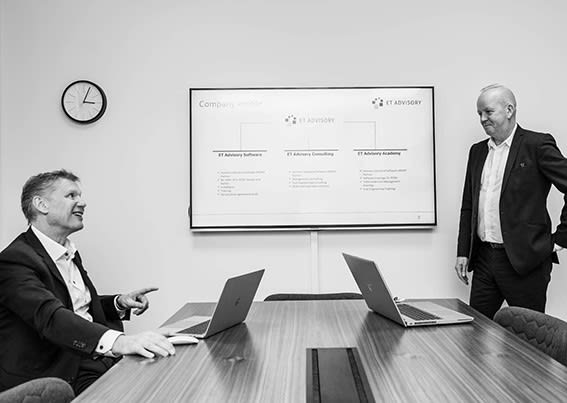
CUTTING COSTS. Tony Bergström (left) together with his colleague at ET Advisory, Mats Bergkvist.
Naturally, potential savings of this magnitude are interesting. What to do to find and realize such amazing numbers?
“Well, with this solution we have been able to in-depth analysis of the subcontractor side and their quotations. With these facts on the table, as the program can show, it’s easier to come to their supplier and say, ‘You charge too much. How? This is how it looks…’
How does this continue? By negotiating based on facts, Bergström explains.
“It is about being able to point at things such as that more material is used than it really does. Or that the number of worked hours are too high, the material costs are incorrectly priced, process misses, etc. It is clear that you may not bring home everything that the program has revealed, but after a negotiation around the matter–with these facts on the table–maybe you will be able to bring down the cost with, say 30 to 40 percent of what has been reached.”
It’s really not about establishing an unfair price pressure on your subcontractor, Bergström claims. More importantly, you will contribute to sharpen the supplier’s edge to keep them, but with greater efficiency regarding the costs that in the end will be passed on to you as a customer.

GOOD OVERVIEW. Examples of interfaces from Teamcenter’s stand-alone module for cost management.
A Design Change Can Mean You Have to Get a New Tool for $50,000
“In automotive product development, for example, today’s vehicles are extremely complex and it is not really possible to understand and handle in detail all processes around this in a reasonably comprehensive manner. With our solution you generate a quote template that looks the same for all subcontractors so that they get the same basis for their calculations,” Bergström explained. But this also includes getting answers the way you want, and quotes that are comparable.
“All suppliers need to fill in the fields you want included in their quotation request, then import everything back to Teamcenter Cost Management and get a clear picture of what separates the answers you received,” he adds.
It can be up to 100 different items that are to be filled in—everything from machine costs, wages, production times and other things. Siemens has plowed down large sums to make the application better and better, and they have succeeded well.
“For example, there’s a module where you can calculate tool costs that make it easier for subcontractors to hit right when it comes to the tender documentation,” Bergström adds. “It is not uncommon to calculate tools that are difficult to grasp in every detail. You can get a design change from your customer, and when it comes to this particular design change, the cost of the article does not have to be very large. But how does it work on the machine or tool side? A new cutting or pressing tool can cost an extra $10,000 to $50,000, which can mean the difference between profit and loss.”
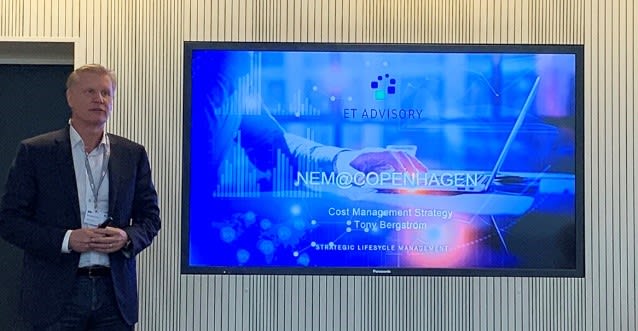
TAKING OFF. Interest in cost management has started to take off in many companies. In the photo, ET Advisory’s Tony Bergström is seen during a presentation where he speaks about strategy plans and the huge savings potential he sees with the help of the TcPCM tool.
Is Excel Good Enough?
Bergström also notes that he can see a trend today: the finance departments have started to take an interest in these issues. They are extremely anxious to get validation that their margins hold.
He also points out another common relationship when it comes to spreadsheets. Many people live in the Excel world and create their own tools. This can be good, but also contains things that can develop into great uncertainties in terms of accuracy and ability to include all the details in the set-up, and the ability to integrate with different systems in terms of data collection is very limited.
“Exactly,” Bergström says. “Many run Excel and say, ‘it is good enough.’ ‘Okay,’ we reply, ‘but just for the sake of things, we can calculate on a product that you have offered, and compare what you have come up with and what our solution comes to and what level of detail we are working on. It’s fair and square.´ The interesting thing here is that we always come at a lower price.”
“In Germany and within the country’s industry, accuracy in this is A and O. You calculate everything following a strict cost management process to secure that all the details are captured before placing an order or sending out a quote, and with TcPCM 100 percent of the traceability is captured using versioning of all calculations. Within Tier 1, the solution is used to obtain secure answers to their quotation requests. For your own safety, you must also know if the profit is sustainable over a three-year cycle, as an example. You know that OEMs come back every year after their own internal evaluations: ‘Now we have learned so much about this product or component that we know that you have to lower the price by 2 to-3 percent to be competitive.’ In short, this happens continuously.”
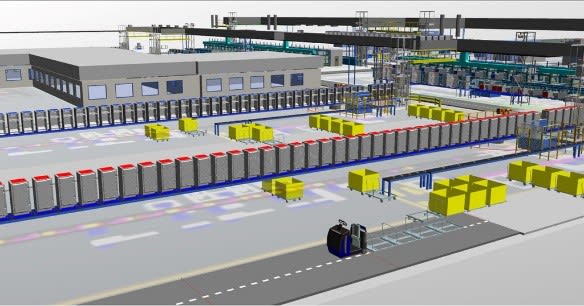
ON THE FACTORY FLOOR. Electrolux is one of the companies that has invested in Teamcenter’s Cost Management solution. The picture shows a Siemens Tecnomatix simulation of a factory flow on E-lux.
What Does Profitability Look Like Over a Three-Year Cycle?
As stated above, for a Tier 1 supplier, it is important to be able to see if they can obtain profitability over the three year-cycle, as mentioned in the example. Bergström stresses that the whole thing is very complex; you may have to invest in tools that cost large amounts, machines must be maintained, etc. This will be a way to ensure that you remain after three years.
“Here we notice that in Germany and some other major industrialized countries this application is used as a de facto standard at several tier levels. But if we look at Sweden, for example, our big OEMs generally use this system for cost analyses; but on the Tier 1 side it is not used to the same extent, which unfortunately can give the effect that you are continuously losing money or losing out in the quotation phase. The difference between German Tier 1 and their Swedish equivalents is big. We have far too few cost engineers in Sweden as a profession, while in Germany within Tier 1 there are at least between five and ten everywhere. Furthermore, there are courses at the universities and several of the large companies have special trainee programs to educate tomorrow’s cost engineers.”
When you work in Scandinavia to sell this solution, are you aiming for automotive?
“They are there, of course; but we also work against a number of other industries, such as the machine side or the consumer goods industry. For example, we have the manufacturer of garden equipment, Husqvarna, lock manufacturer Assa Abloy and Electrolux as a good example of customers.”
The bottom line, claims Bergström, is that an investment in the Teamcenter Product Cost Management tool can be a profitable bet, but also a game changer in how a company works with product cost management.
“One should be aware that a price that is a couple of cents too low in larger series of components can lead to heavy losses. Furthermore, the time you save in quotation work should not be underestimated,” Bergström concludes.

